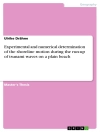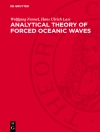Andrew F. Nagy Originally published in the journal Space Science Reviews, Volume 139, Nos 1–4. DOI: 10. 1007/s11214-008-9353-0 © Springer Science+Business Media B. V. 2008 Keywords Aeronomy The term “aeronomy” has been used widely for many decades, but its origin has mostly been lost over the years. It was introduced by Sydney Chapman in a Letter to the Editor, entitled “Some Thoughts on Nomenclature”, in Nature in 1946 (Chapman 1946). In that letter he suggested that aeronomy should replace meteorology, writing that the word “meteor is now irrelevant and misleading”. This proposal was apparently not received with much support so in a short note in Weather in 1953 Chapman (1953)wrote: “If, despite its obvious convenience of brevity in itself and its derivatives, it does not commend itself to aeronomers, I think there is a case for modifying my proposal so that instead of the word being used to signify the study of the atmosphere in general, it should be adopted with the restricted sense of the science of the upper atmosphere, for which there is no convenient short word. ” In a chapter, he wrote in a 1960 book (Chapman 1960), he give his nal and de nitive de nition, by stating that “Aeronomy is the science of the upper region of the atmosphere, where dissociation and ionization are important”. The Workshop on “Comparative Aeronomy” was held at ISSI during the week of June 25–29, 2007.
Innehållsförteckning
Preface.- Energy Deposition in Planetary Atmospheres by Charged Particles and Solar Photons.- Cross Sections and Reaction Rates for Comparative Planetary Aeronomy.- Neutral Upper Atmosphere and Ionosphere Modeling.- Modeling and Simulating Flowing Plasmas and Related Phenomena.- Neutral Atmospheres.- Solar System Ionospheres.- Photoemission Phenomena in the Solar System.- Plasma Flow and Related Phenomena in Planetary Aeronomy.- Exospheres and Atmospheric Escape.- Atmospheric Escape and Evolution of Terrestrial Planets and Satellites.- Aeronomy of Extra-Solar Giant Planets.












